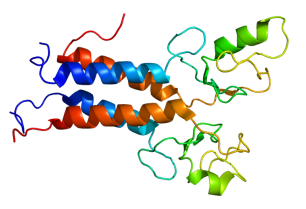
BRCA1 and BRCA2 have been considered important risk factor biomarkers for breast cancer since at least the release of Myriad’sBRACAnalysis™ test in 1996, but to-date they have only been used for identifying people who are at high risk of developing breast cancer, and have not been used to guide treatment for that disease or any other.
That changed last Friday with the announcement that FDA has approved AstraZeneca’s olaparib for ovarian cancer. Olaparib is indicated for patients with germline mutations of BRCA1 and BRCA2, and is the first drug to require testing for these biomarkers. Myriad’s BRACAnalysis CDx™, approved at the same time as the drug, is the FDA-approved companion diagnostic test for use in prescribing olaparib.
Given that many labs now offer LDTs for BRCA1/2 in the wake of the Supreme Court’s decision against Myriad’s patents, it will be interesting to see what share of the market the BRACAnalysis CDx™ test enjoys. The label has not yet been released, but will presumably, as for all drugs with a companion diagnostic, require that only the approved test be used to guide prescription decisions.
That said, anecdotal evidence (and even explicit statements from industry representatives) suggest that LDTs are widely used in a companion diagnostic context. Will Quest preclude its BRCAvantage™ test, or LabCorp its BRCAssure℠ test from being used for companion diagnostic purposes?
Olaparib is also interesting in that it is the first PARP inhibitor to come to market, and represents the first clinical use of a new mechanism of action. Inhibition of PARP is a promising therapeutic approach for a variety of diseases, and BiomarkerBase includes clinical trials for eight different diseases in which PARP is being measured/targeted.
Click here for the press release from AstraZeneca.
